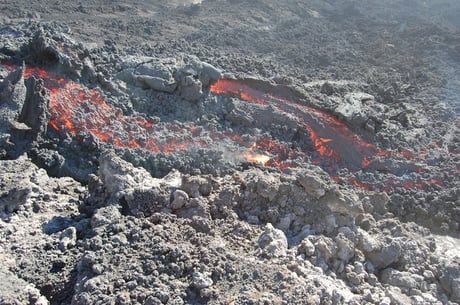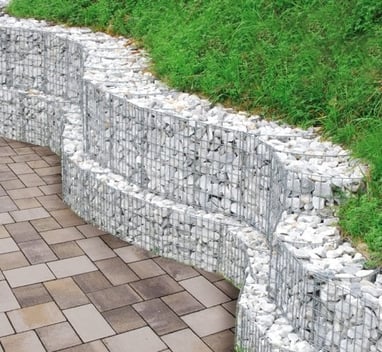
Rust: The Enemy of Your Welded Wire Fence
Think of galvanization as the soldier that fights rust. Rust is the result of the ravages of:- air
- moisture
- abrasion
These three can make short work of breaking down iron and its common alloy--steel.
However, a coating of zinc reacts differently to these factors. As it corrodes, it forms a barrier (or patina), running interference between it and the steel or iron that it is sheltering.
Classes of Zinc Coating
Class 1--
- Protection drastically reduced in humid climates. (For the record, there is no Class 2.)
Class 3--heaviest coating of zinc; lasts 13 to 30 years, often must be special ordered (.80% zinc per sq. foot)
- However, in humid conditions, the coating may last at least 15 years with wider wire gauges lasting longer
Zinc galvanization creates a first-rate coating for mesh and fencing that lasts
After wires are either welded or woven into a mesh, the entire finished product is drawn through a bath of molten zinc (830°F.) This galvanization-after-weave or weld method (GAW) creates a
More zinc = more protection...
...delaying the time until rust sets in. So the more zinc per square foot, the longer it is until it rusts.
What's at work here? Friability.
If something is friable, it is subject to the rubbing process that works on the surface of unprotected iron or steel, which offers no natural corrosion-resistant patina. Friability describes the flaking and breaking apart of a solid substance.
And the benefits of a Class 3 zinc coating?
- Lowest cost over the long run
- Damage resistance--the zinc patina guards the metal underneath
- Cheaper than stainless steel
- Consistent results
- Longest life
And what does the ASTM standard actually mean?
Seeing this on a product, such as for zinc coatings, shows that a company is adhering to a certain set of criteria for the quality of a product. These are internationally accepted guidelines, based on research, for the specifications of materials, products, and services as approved by a governing board. (ASTM International was once known as the American Society for Testing and Materials.) Buyer beware: a company's adherence to these standards is voluntary.
A Class 1 coating for your mesh or fence is anything but top rate. Now think again about that coating. It can mean: this looks fine or it'll do. In the long run (or even the short run), it will not stand up.
Various elements that cause deterioration:
airborne sand and dust chemicals salt air pollution
A few zinc facts:
Zinc is the 27th most abundant element in the earth's crust. 70% is mined, 30% recycled. More than 50% of this is used to coat steel and keep it from disintegrating.
Zinc is found in rocks, soil, air, water, the biosphere as well as in humans, plants, and animals. (If you're an oyster lover, you're in luck: zinc is plentiful in oysters and it is essential for optimum health.)
Biology: organisms must have zinc to exist. For example, in the human body, zinc is important for cell division and is responsible for the function of red and white blood cells.
Finally, a short video:
Here's an example of zinc galvanizing in action:






















